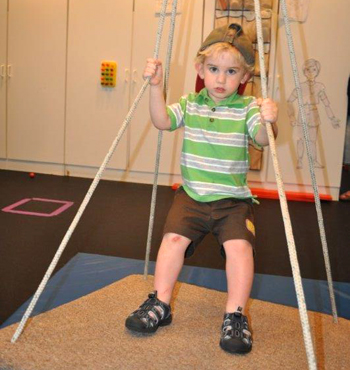
|
Pediatric Occupational, Physical, ABA/Behavioral, Feeding, Speech, and Language Therapies Main Clinic: 931-372-2567 1445 East 10th Street Cookeville, TN 38501 Email: [email protected] HIPAA Secure Email: [email protected] Fax: (931) 372-2572 ABA Clinic: 931-201-9534 400 Dubois Road Cookeville, TN 38501 Email: [email protected] Please call today to get started! Most insurances accepted! |

|
| Who needs therapy? | SE HABLA ESPAÑOL |
Fine Motor Can Ideas
Center of Development
Pediatric Vision Care and Therapies
developmentaldelay.net
Fine Motor Can Ideas:
"Yes U Can" Fine Motor Can: This is a great, cheap, and fun way to work on in hand manipulation,pincer grasp, bilateral coordination, and many other fine motor skills.
Use coffee creamer containers, or sour cream, yogurt, etc. plastic container. Cut a slit large enough for the buttons or coins, then a small hole large enough for the round objects.
Put chalk, large buttons, uncooked beans or popcorn, marshmellows, paper clips, old keys, coins, etc. inside. (If risk on choking or hand to mouth is issue, use only small edibles such as cheerios, raisins, marshmallows)
The child must hold the can with one hand and use the other to put the object inside. Placing the objects on a table for them to pick up on their own encourages more fine motor manipulation and pincer grasp, placing objects in their palm can help encourage in hand manipulation from palm to finger tip.
Encourage finger isolation by poking cotton balls or marshmellows through larger hole.
Asking them to store several in palm and use one hand (may have to hold back opposite hand on the can) using thumb opposition to the palm and fingers to the palm movements to manipulate to fingertips (is a very hard fine motor task, but these movements are necessary in order to be ready to hold a pencil and write correctly)!
Do not allow children to place objects in mouth, if this persists, replace objects with edibles such as marshmellows, gummy worms and bears, cheerios.
This activity will help increase fine motor coordination, finger strength, in hand manipulation, finger isolation, and mature grasps. Which will carry over to their ability to write better, hold a pencil correctly, and be less frustrated and tired with fine motor tasks. This should always be combined with a weight bearing strengthening program that works on creeping on all 4's, wheelbarrow walking, and other weight bearing tasks.
1. Pick up one small object at a time and put into appropriate hole in can. Hold the can with the free hand.
2. Pick up objects on the left side with the right hand and objects on the right side with the left hand. Let the free hand hold the can. This will help work on crossing midline (very important skill for hand dominance, shoe tying, etc.) as well as bilateral coordination because one hand is stabilizing an object while the other hand is moving. This also helps prevent the temptation of picking up the objects on the right side with the right hand.
3. Turn left palm up and place 2-3 small objects in it. Have the thumb push one object at a time to the very top of the index finger. Insert object into can while holding remaining object(s) in hand. Repeat with the right side. Have the free hand hold the can to prevent it from helping the working hand. If this skill is hard, start by practicing with one small object at a time, or having the thumb touch a sticker in the palm of the hand, then middle of index finger and top of index finger before using one small object.
4. Use modeling clay, firm putty, or play dough to hide several objects in, then the student uses thumb and fingertips to "fish out" the hidden objects, then places in the can!
5. Can use small tongs or coffee filter separators (.99 cents at walmart in utensil aisle) to pick up coins and larger objects and place in the can. This really helps strengthen the web space (space between the thumb and fingertips, which controls most fine motor movements, such as writing and cutting).
Heidi L. Clopton, OTR/L
Site empowered by
WebOnTheFly